Navigating the New Age of Work
In today’s tech-enabled economy, the nature of work is changing — and with it, the perennial debate about work-life balance. This issue is far from clear-cut for NUS graduates, as The AlumNUS finds out.
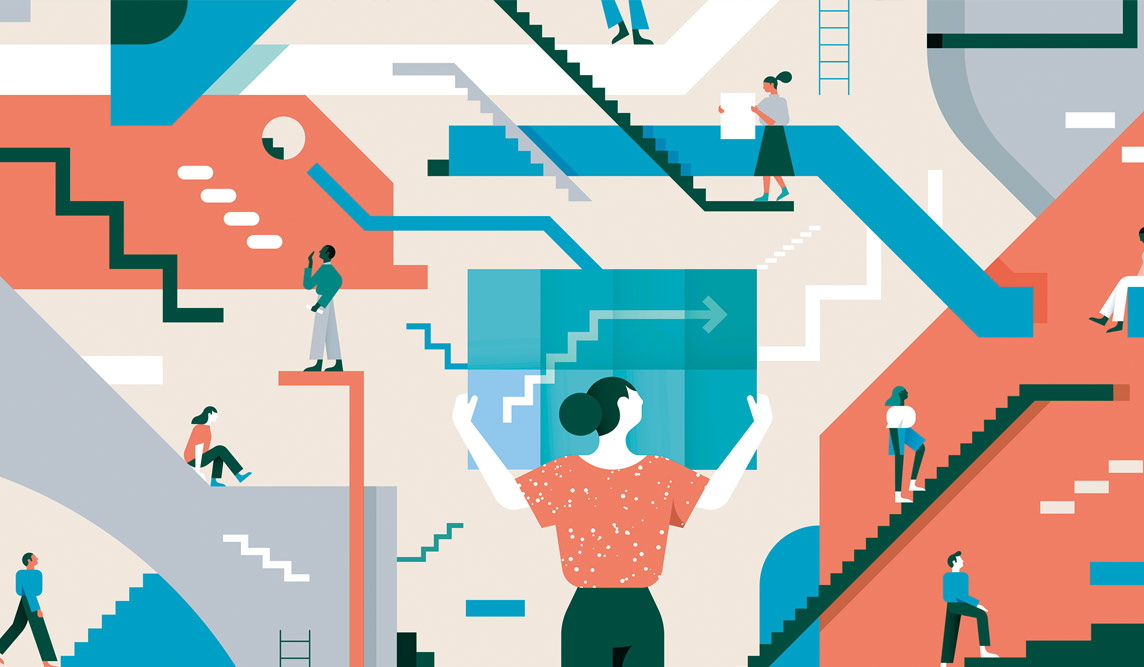
A ‘996’ work schedule — 9am to 9pm, six days a week — may be de rigueur in China’s fiercely competitive tech industry, but it is not most people’s idea of fun. On the contrary, the thought of a 72-hour workweek might cause many of us to break out in a cold sweat. So when Jack Ma, co-founder of Chinese e-commerce juggernaut Alibaba Group, endorsed the ‘996’ work culture and called it a “huge bliss” according to an April 2019 post on Alibaba’s official Weibo account, it was unsurprisingly decried by critics from all over the world.
There is broad consensus that working long hours have negative health consequences. In the last two years alone, the European Heart Journal, Journal of Happiness Studies and Mayo Clinic staff, among others, have reported that overworked employees experience high levels of stress or burnout, which can manifest in a variety of physical and mental health problems such as fatigue, constant headaches, insomnia, heart disease, anxiety and depression. This raises the likelihood of employees being less productive or committing errors at work, to say nothing of the higher healthcare spending and turnover costs borne by employers.
In an ideal world, everyone will be able to strike a good balance between their career and personal life, and employers in turn would reap the benefits of a healthy, happy workforce. But if ‘996’ isn’t the answer, what is? Why is it probably easier said than done? It is worthwhile to examine how well (or not) NUS alumni have fared in achieving work-life balance, and how their experiences — as well as the advice of NUS career experts — can help fellow alumni, including NUS’ freshly-minted graduates who are about to join the workforce.
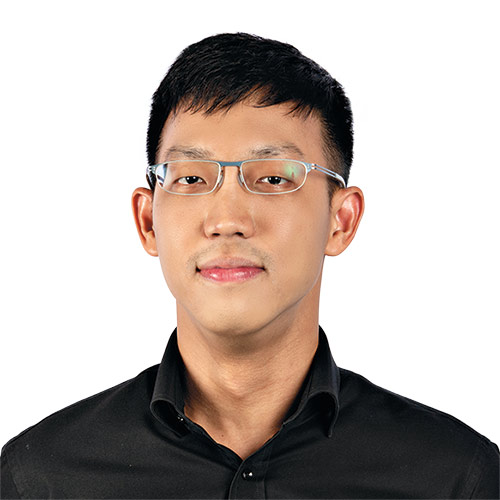
WORK-LIFE INTEGRATION TIP #1
Set clear boundaries for yourself. Identify what you are willing to tolerate as far as time management, workload and work hours are concerned, and stick to those boundaries.
Mr Daryl Boey, Senior Talent Acquisition Manager, APAC, Essence
BLURRED BOUNDARIES
Let’s get one thing straight: there is no such thing as work-life balance anymore — at least from a binary, either-or perspective. Technological advances such as powerful mobile devices, high-speed WiFi hotspots, video conferencing tools, instant messaging apps and document collaboration software allow people to work at any time and from anywhere, causing work to spill over into home life and vice versa. This has brought about a slew of non-traditional flexible work arrangements (FWAs) including telecommuting, hot-desking, co-working spaces, staggered hours and compressed (four-day) workweeks.
Companies are by and large moving in this direction to attract and retain employees. More women — who tend to shoulder the child-rearing burden — are entering (or re-entering) the workforce; family caregiving responsibilities are growing due to our ageing population; and job-hopping and freelance work are becoming more prevalent in the new ‘gig’ economy — all amounting to louder calls for FWAs and other work-life balance policies.
In this context, the more apt term ‘work-life integration’ (or ‘work-life harmony’) has caught on. It mirrors real-life situations like checking work emails at home or on vacation, paying bills online during office hours and socialising with colleagues outside the workplace. “To me, work-life balance means the integration of my professional and personal lives in a way that helps achieve my goals in both realms in a meaningful manner,” says Mr Daryl Boey (Arts and Social Sciences ’12), Senior Talent Acquisition Manager for Asia-Pacific at media agency Essence.
Mr Boey, 32, adds that work-life integration is subjective, as it depends on the extent to which the individual is willing to make sacrifices in the work or non-work sphere. Someone intent on getting ahead in their career would readily devote more time at work, whereas another person might arrange to leave work earlier on certain days to attend hobby-related classes. “Manage your time to accomplish your professional and personal goals in a way that is most comfortable for you. It is a work in progress, so be prepared to adjust accordingly when it makes sense to, at different junctures in your life,” he asserts.
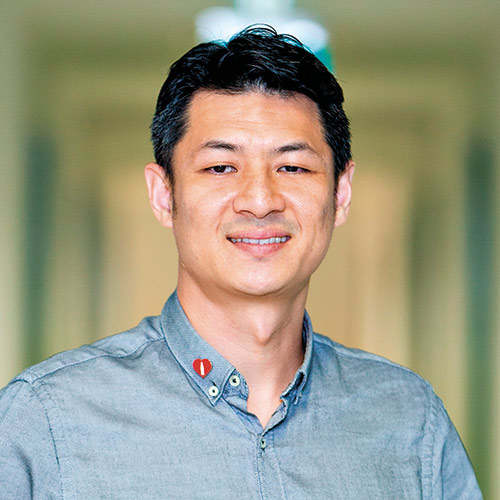
WORK-LIFE INTEGRATION TIP #2
Build up financial literacy as early as possible. Learn how to invest in stocks to earn a passive income stream and reach financial stability. This will give you the freedom to leave an unsatisfying job and do something you are passionate about.
Dr Ryan Chaw, External Technology Acquisition – APAC Lead, The Coca-Cola Company
The notion that work-life integration is continually evolving is something Dr Ryan Chaw (Engineering ’02), a career-minded-person-turned-family man, can relate to. “When I was in my 20s and just starting out in my career, I was focused on getting more work experience and growing my professional capabilities. Work took higher priority,” says Dr Chaw, 41, who has two sons aged 10 and eight. “Things started to shift in my 30s, after I got married and had kids. As I’ve grown older, my perspective on life has changed. Chasing a career is not as important to me as spending time with my family.”
Nonetheless, there have been some bumps along the way. When Dr Chaw, a former materials research scientist, joined The Coca-Cola Company in 2015 as the External Technology Acquisition Lead for Asia-Pacific, it took a while for him to get settled. “During my first few months at Coca-Cola, I struggled with the ‘always-on’ work mindset. Because I was still new to the role, I felt like I had to respond immediately to work calls, even after office hours and on weekends,” says Dr Chaw. “Once I got the hang of my job and learned how to prioritise work tasks, things became more manageable.”
THE MILLENNIAL FORCE
Singaporeans are giving greater priority to the work-life interface, as revealed by recent surveys. In Randstad’s Employer Brand Research 2018: Singapore Report, the employment agency noted that, next to salary and benefits (55 per cent), work-life balance (53 per cent) was the top reason Singapore employees — especially women — gave for staying in their present jobs. A separate survey by recruitment firm Robert Half found that one in four Singaporeans would leave their current organisation for a better work-life balance, valuing it just above better financial rewards (24 per cent).
These results are consistent with a LinkedIn survey that was conducted in 2018 with respondents across nine Asia-Pacific countries. The study showed that nearly half (40 per cent) of all respondents regarded work-life balance as the ultimate job aspiration, particularly those from the developed economies of Singapore (48 per cent) and Australia (46 per cent). Interestingly, the growing influence of millennials on the job market — and their preference for purposeful work over higher pay — was posited as a major factor behind this trend.
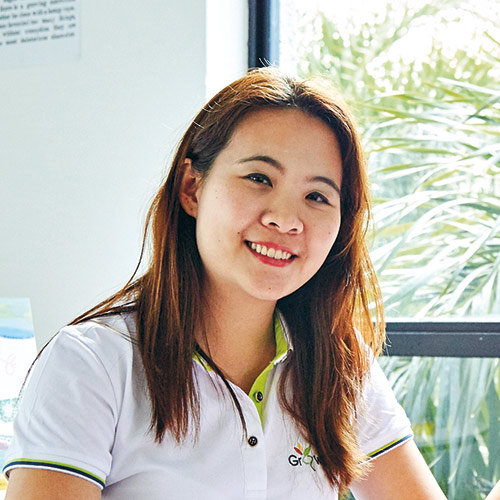
WORK-LIFE INTEGRATION TIP #3
Identity is multi-faceted; career is just one part of it. Don’t focus solely on building your career. Discover your passion and what excites you outside of work. Be open to new experiences to find out what you like and don’t like.
Ms Shamantha Yan, Co-Founder, Growthbeans
Millennial twins Ms Shamantha Yan (Arts and Social Sciences ’08) and Ms Shane Yan (Arts and Social Sciences ’08), 33, acknowledge that the search for purpose has been a key consideration in their working lives. Both of them used to work long hours in their corporate jobs — Shamantha at Singapore Airlines, and Shane at human resource consulting firm Mercer — before they linked up in 2015 as co-founders of Growthbeans, a social enterprise aimed at helping people form connections with others (through ‘Sharing Circles’) to facilitate career and personal development.
“The weekly ‘Sharing Circle’ sessions serve as a safe space for participants to share their thoughts and views to non-judgmental listening ears, find their sense of identity beyond their job titles, and build meaningful relationships with others,” says Shamantha. This work is aligned with the duo’s passion to help people gain self-awareness to lead happier, more fulfilling lives, as they themselves have realised. Shamantha explains, “At some point, you have to stop seeing work and life as two separate things. What matters more is that you enjoy what you are doing in all areas of your life.”
Shane opines that millennials’ increased desire for work-life balance may be the by-product of greater financial security. “In the past, people operated in survival mode — they needed to work hard to provide for their families. By comparison, our generation has not faced such hardships. Living standards have improved, and most millennials can receive financial support from their parents.” Referencing Maslow’s ‘hierarchy of needs’ theory, Shane says, “We are able to move on from the basic physiological needs to higher-level needs like self-actualisation, or seeking personal growth to give meaning to our lives.”
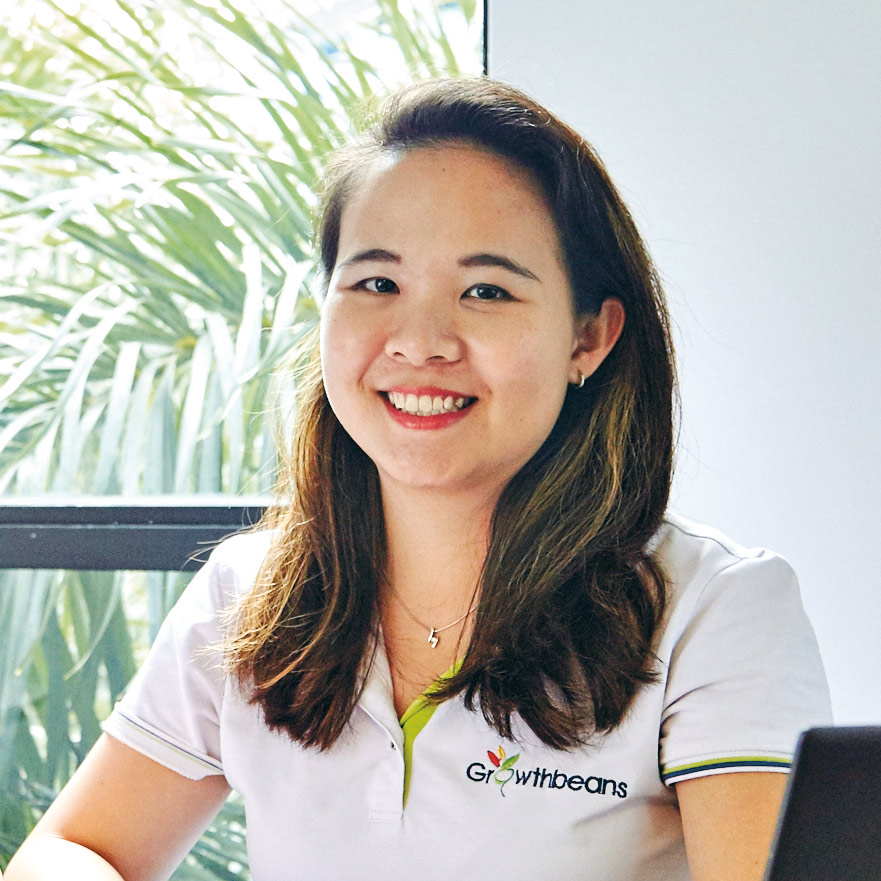
WORK-LIFE INTEGRATION TIP #4
Reflect on your priorities and what is important to you. Practise time management; know when to hit the ‘stop’, ‘start’ and ‘pause’ buttons. Have the self-discipline to avoid getting bogged down by minor details, and let go of perfectionism.
Ms Shane Yan, Co-Founder, Growthbeans
FWAs ON THE RISE
As stated in the Ministry of Manpower’s latest Conditions of Employment report released in January 2019, Singapore saw the following increases between 2017 and 2018:
As employers, the Yans are strong advocates of work-life balance. They are currently based at the co-working space Social Collider, but all four Growthbeans staff (including the two sisters) can work from anywhere and have the flexibility to manage their own time. Likewise, Dr Chaw is leasing a space at the Action Community for Entrepreneurship (ACE) Co-working Zone in one-north, which puts him closer to potential external partners for “open innovation” opportunities. Coca-Cola’s Flexible Work Schedule Policy also provides employees with the means to organise their working lives to suit personal needs in improving productive time and reinforcing work-life balance.
“FWAs are increasingly becoming the norm, and hence workers have come to expect this when evaluating prospective employers,” says Mr Alvin Low, Head of Strategic Relations and Planning at NUS Centre for Future-ready Graduates (CFG). “Among the employers we have interviewed for CFG’s Future-ready Reports, fostering work-life harmony was a prominent theme. We also highlighted that workplace culture factors like Purpose, Growth, Challenge, Trust, Autonomy, Collaboration and Well-being were key motivators for millennial talents beyond hygiene factors such as salary.”
IN THE DRIVER’S SEAT

A 2018 Universum global talent survey ranked Google as the most attractive employer for Business, Engineering, IT and Arts students in Singapore universities (including NUS). Moreover, work-life balance was the most-selected career goal upon graduation for the students surveyed, across all fields of study. Ms Anuprita Bhomick (Business ’03), 45, Global Head of Partner Programmes at Google, who is also an Adjunct Lecturer at NUS Business School, shares how she has sought to integrate work and life throughout her tech career.
“From my experience at companies like Dell, Hewlett-Packard and now Google, I can say that the tech sector has a long history of flexible working hours, telecommuting, sabbaticals, generous paid parental leave, as well as other employee benefits and perks such as on-site gyms and subsidised or free food. This is not the case across all industries, some of which still have time cards or measure productivity by the time spent in office.
I have had my fair share of hard lessons when it comes to work-life balance. Previously, financial security — paying off my mortgage, affording my Master’s degree, and saving up for retirement and for my kids’ education — was uppermost in my mind. There were times when I felt like I was doing too much at work, and I have missed important family occasions. I tried hard to live up to my bosses’ and co-workers’ expectations of me. Then it started to take a toll on my health. I had a difficult pregnancy with my second child [now four years old]. I had to turn inwards to figure out what was right for me.
Now that I am in my 40s, I feel more centred and relaxed. Work-life integration to me has four components — doing more in my career, being more present for my family, giving back to the community, and investing in self-growth. You can do all this and push for four-way wins, if you have clarity on what makes you happy. At the end of the day, you are in the driver’s seat of your own life and happiness. Don’t drown out your own voice; do what is right for you.”
REALITY BITES
Despite the increased attention to work-life harmony by employees and employers, it continues to elude vast swathes of people. Stories of advertising executives, auditors, lawyers and medical residents clocking excessive hours are legion. For every happy, productive tech employee like Ms Anuprita Bhomick [see ‘In The Driver’s Seat’], there is a disgruntled, burned-out counterpart in China due to the gruelling ‘996’ system. For every individual who makes use of FWAs to lead a well-balanced life, there is another who feels compelled to be in ‘always-on’ work mode because of the ability to work anytime, anywhere.
Japan and South Korea may be infamous for their ‘death from overwork’ problem, but the fact is that Singaporeans put in one of the longest working hours in the world. Under Singapore’s Employment Act, employees are allowed to work up to 44 hours a week, which is within the 48-hour standard set by the International Labour Organization. They are also not allowed to work more than 12 hours a day, or over 72 hours of overtime a month. However, most Singaporeans appear to be exceeding this limit.
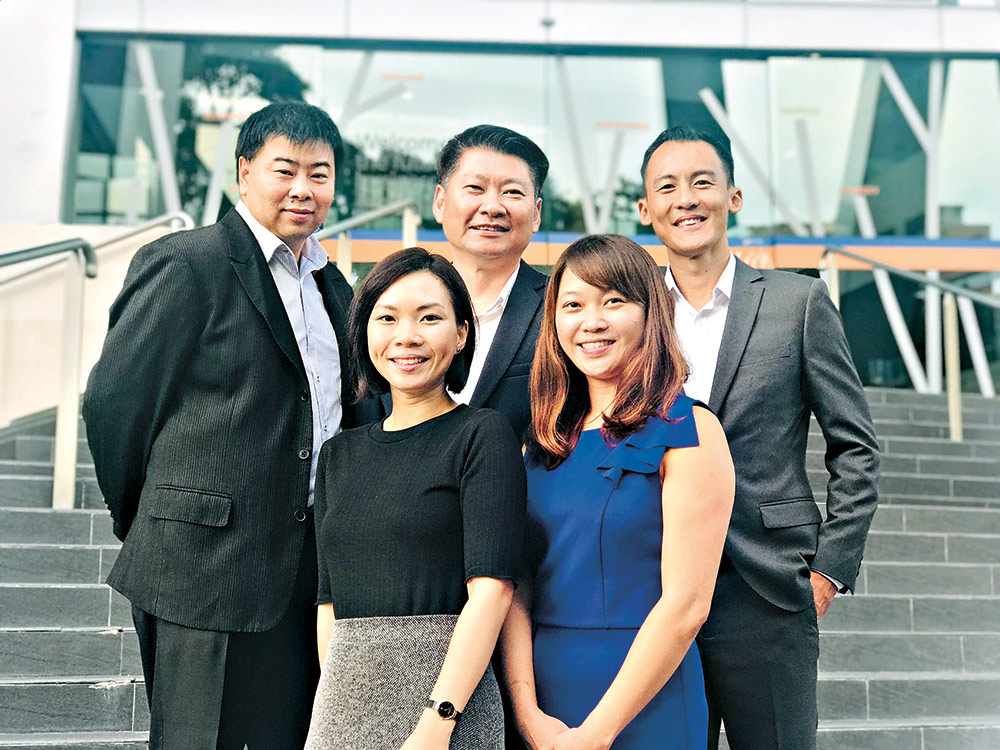 The Career Advisors from NUS Business School are (front row, left to right) Ms Julynn Liang and Ms Theresa Ong; and (back row, left to right) Mr Kenneth Lam, Mr Eddie Phua and Mr Clarence Ong.
The Career Advisors from NUS Business School are (front row, left to right) Ms Julynn Liang and Ms Theresa Ong; and (back row, left to right) Mr Kenneth Lam, Mr Eddie Phua and Mr Clarence Ong.
The Ministry of Manpower reported that Singapore employees worked an average of 44.8 paid hours a week (equivalent to nearly nine hours a day for a five-day workweek) in 2018, down slightly from 46.3 paid hours a week in 2008. However, these statistics exclude unpaid overtime and so there may be systematic under-estimation of working hours. Looking specifically at the millennial cohort, a 2016 survey by global recruitment agency ManpowerGroup found that millennials in Singapore worked 48 hours a week — trailing only behind their peers in India at 52 hours, and on par with China and Mexico.
Naturally, this struggle over work is affecting the well-being of Singaporeans. According to a recent survey by health service company Cigna, 92 per cent of Singaporean respondents were stressed from work — higher than the global average of 84 per cent, and making Singaporeans among the most stressed at work globally. Of this group, 13 per cent considered their stress unmanageable, causing sleep deprivation.
NUS Business School’s Undergraduate Career Advisory Team suggests that Singapore’s kiasu (fear of losing out) culture may be partially at fault: “Due to our education system and upbringing, the majority of the workforce aims to stay globally competitive with lucrative salary packages and simultaneously achieve a healthy work-life balance. However, more often than not, with the advent of evolving technology, employees are working even longer hours outside of the stipulated office hours via emails and mobile app messages.”
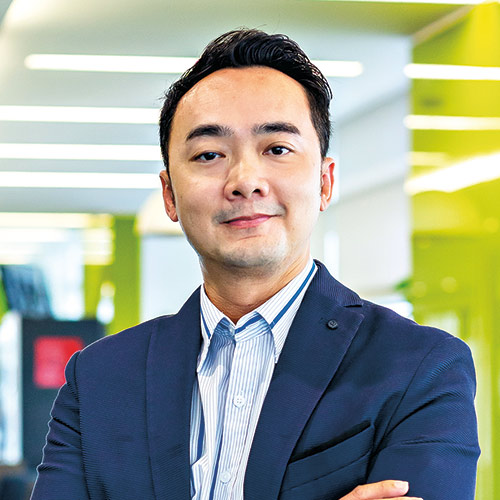
WORK-LIFE INTEGRATION TIP #5
Have courage. Believe that you are not being judged based on the number of hours you put in at work, or on the societal labels others may pin on you. Be upfront about whether you find more fulfilment through work or outside of work.
Mr Daniel Chia, Head of Human Resources, Samsung Asia
DID you Know?

South Korea and Japan have begun taking legal steps to prevent ‘death from overwork’. Last year, South Korea cut its maximum weekly work hours from 68 to 52, while Japan has formally capped overtime work at 100 hours a month.
Mr Daniel Chia (Science ’03), Head of Human Resources at Samsung Asia, agrees with them. “Unfortunately, Singaporeans still have a penchant for labelling people by their material wealth or possessions, which is driving a competitive ‘race to the top’. I don’t think this will change anytime soon,” he admits.
Within Samsung, Mr Chia, 42, discloses that there is a formal telecommuting policy in place, yet the staff take-up rate is low. “Most employees dare not work from home, probably because they are worried of being perceived as skiving by their bosses.” Thus, he says, work-life integration requires a “two-pronged” approach. “An organisation can have the right infrastructure to promote work-life integration — for example, offering FWAs and recreational facilities such as a gym or foosball table — but it is up to the individual to utilise it, as well as the people manager to embrace it.”
NO SUBSTITUTE FOR HARD WORK
The best way for undergraduates to prepare themselves for the rigours of the workplace, and be exposed to the work-life harmony typically offered in a particular industry, is by taking internships. “As an intern, the student could infer and decide if the work climate complements the lifestyle which they are comfortable with. This could be done by observing seniors who have been working in the company for the past one or two years,” say NUS Business School’s career advisors.
CFG also provides career advisory services for students in various NUS faculties. Mrs Camilla Tam, a Faculty of Science Career Advisor at CFG, notes that students often bring up the topic of work-life balance during career coaching sessions. “We try to educate the students that employers want people who are willing to work hard to learn and develop fast, so it’s important to have an open conversation on expectations early on,” says Mrs Tam. “Undoubtedly fresh graduates will face a steep learning curve when embarking on their first jobs, so they need to be prepared for an element of occasional overtime at the start to build up their proficiency [even if it is not explicitly stated in the job scope].”
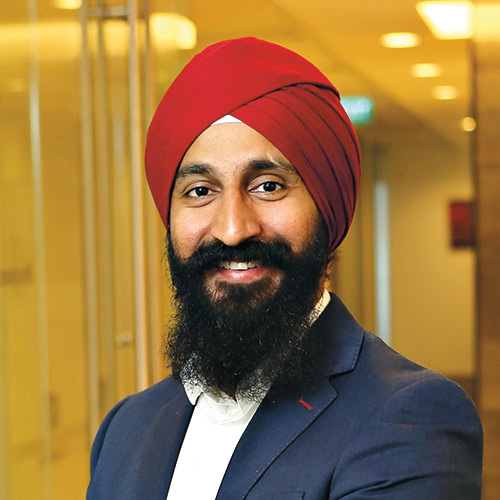
WORK-LIFE INTEGRATION TIP #6
Try reframing the issue. Instead of viewing work-life balance and professional success as an ‘either-or’ dilemma, approach it with a ‘both-and’ mindset.
Mr Jasbir Singh, Head of Learning and Development, NUS Centre for Future-ready Graduates
Mr Jasbir Singh, Head of Learning and Development at CFG, reiterates: “In the spirit of conscious growth and learning, I think the first year or two after graduation can be the time to allow the balance to tilt heavily in favour of work. But maybe not in perpetuity. The key word here is conscious — deciding that you choose to work longer hours than you are paid for so that you can learn as much as possible, build credibility and grow your professional network.”
Patience and resilience are therefore required for those just starting out in their careers. On some level, then, even though FWAs and other provisions for work-life harmony are now widely available in the workplace, the best recourse for fresh graduates may be to adopt the mindset that such provisions should be earned rather than expected. Proving one’s worth in the workplace is the first step towards accelerating a fledgling career and, ultimately, achieving work-life integration.

CULTIVATING FUTURE-READY Graduates
To equip NUS students with essential soft skills that are applicable across all life domains, including work, CFG has launched two new initiatives during the Academic Year 2018/19. The first is the Career Accelerator workshop series, where CFG trainers and reputed industry professionals conduct ‘Lunch and Learn’ workshops to teach important soft skills like empathy, resilience, productivity and relationship-building in the context of the workplace environment.
The second initiative is Roots & Wings 2.0, an updated, more interactive version of the Roots & Wings programme introduced in 2016. Delivered in partnership with the Department of Psychology, Roots & Wings 2.0 comprises a series of bite-sized modules, each focusing on a specific soft skill (such as resilience, self-awareness and collaboration) to enhance personal and interpersonal effectiveness. Each module carries one modular credit and runs across three face-to-face experiential workshops of three hours each.